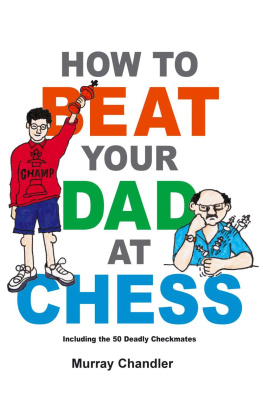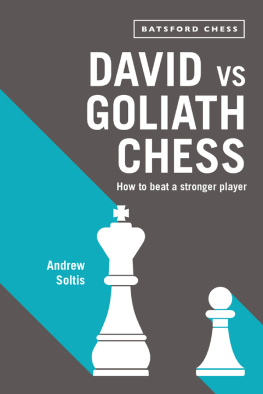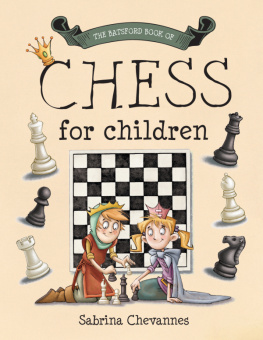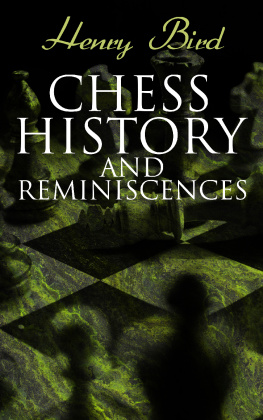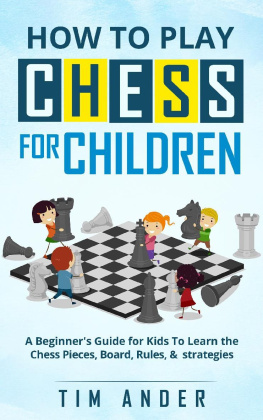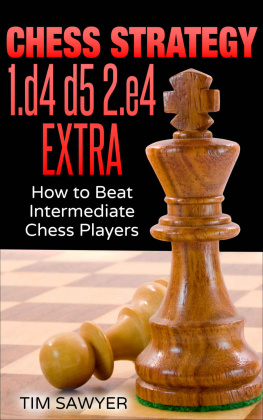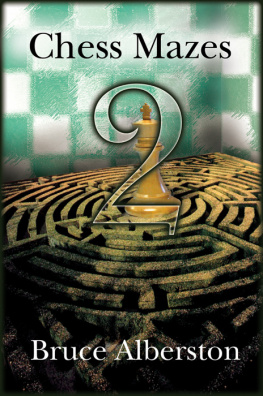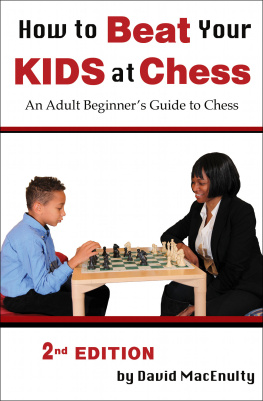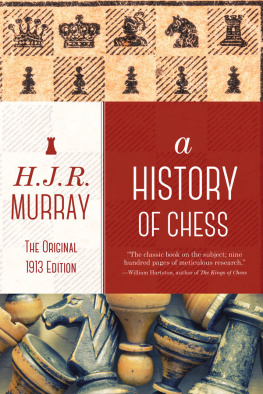How to Beat Your Dad at Chess
Murray Chandler


Contents
The 50 Deadly Checkmating Patterns
And Finally...
Introduction
This book is for every chess-player who regularly faces and loses to opponents stronger than themselves. This could be at work, down the chess club, at school, in tournaments, or, as for many youngsters, at home, playing Dad. In fact for Dad read anyone who constantly outplays you, grinds you down, takes your pieces and checkmates you.
Each of the 50 Deadly Checkmates catalogued here explains a specific theme used to attack the opponents king. These themes are recurring, and crop up again and again in chess games virtually regardless of the level of the players, or the precise placement of the pieces. Top chess-players are very skilled at recognizing these basic patterns. By learning the key elements it becomes much easier and quicker to find winning combinations.
One qualifying criterion for the 50 Deadly Checkmates was that each theme should arise at least fairly frequently in actual practice. Some of the themes occur all the time. Whatever your level of play, there will be many opportunities to employ these attacking concepts.
So, if you really want revenge over Dad here it is!
Murray Chandler
Algebraic Notation

The chess notation used in this book is the simple, algebraic notation in use throughout the world. It can be learnt by anyone in just a few minutes.
As you can see from the chessboard above, the files are labelled a-h (going from left to right) and the ranks are labelled 1-8. This gives each square its own unique reference point. The pieces are described as follows:
| Knight | = | N |
| Bishop | = | B |
| Rook | = | R |
| Queen | = | Q |
| King | = | K |
Pawns are not given a symbol. When they move, simply the destination square is given.
The following additional symbols are also used:
| Check | = | + |
| Double Check | = | ++ |
| Capture | = | x |
| Castles kingside | = | 0-0 |
| Castles queenside | = | 0-0-0 |
| Good move | = | ! |
| Bad move | = | ? |

In the diagram above, White is about to play the move 1 e4. The indicates the move number, and e4 the destination square of the white pawn.

In this diagram, Whites 1 e4 move is complete. Black is about to reply 1...Nf6 (moving his knight to the f6-square on his first move).
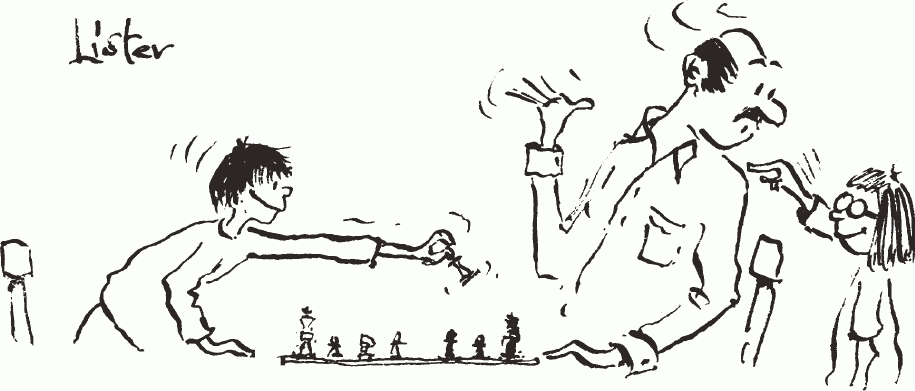
How Chess Masters Think
If you were to visit a chess tournament and watch a grandmaster in action, you would be able to observe a surprising range of emotions. Sometimes, in apparently simple positions, the grandmaster might lapse into lengthy periods of concentration, where ten minutes or more might be spent on a move. At other times the moves will come very quickly, even in complicated positions. You might even be shocked if the grandmaster suddenly wins the game with a lengthy and brilliant mating sacrifice after thinking for just a few seconds. Clearly the analytical process is not always directly related to how complicated the position is on the surface.
The reason for this is pattern recognition. If the grandmaster can recall similar positions encountered in the past, the same themes and concepts might be applicable to the game in hand. This makes it much easier and quicker to analyse a position. It especially applies to the most basic attacking formations around the enemy king. Once a known motif is spotted, the moves of the potential combination are analysed to check that it does indeed work in the particular position on the board.
It is clear then that chess analysis is a mixture of calculation of individual moves and pattern recognition.
Effectively all chess-players think in this way (consciously or otherwise!). However, the ratio between these two methods of thought is different for players of varying strengths. Although no scientific tests have been done, inexperienced players use perhaps 95% calculation and 5% pattern recognition. For master-strength players the figure is more like 40% calculation and 60% pattern recognition. Logically, therefore, learning to recognize more key patterns could help dramatically improve your chess strength.
In this book we will shortly cover the 50 most deadly checkmating patterns, all of which involve direct attacks on the enemy king. But first of all, a little illustration of how we recognize and remember chess patterns (see next page).
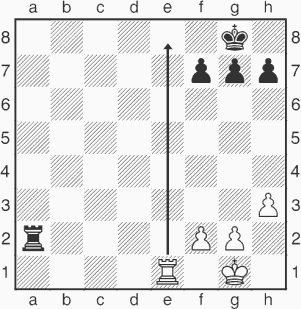
1) White moves
In this simple position White plays 1 Re8 checkmate, as indicated by the arrow. If you tried, could you remember this position tomorrow? Quite likely. Even if you could not recall exactly where each white pawn was, you would almost certainly remember the essence of the combination White giving a checkmate on the back rank with his rook.
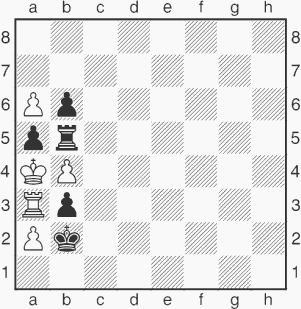
2) White moves
This position is very artificial and would never occur in a real game. Although it contains the same quantity of pieces and pawns as the previous diagram, it is hard for a chess-player to memorize this illogical position. Unlike diagram 1, there are no familiar patterns to assist, and each piece must be remembered individually.
If asked, some strong chess-players would be able to recall the logical position number 1 perfectly, weeks or even months after being shown it. However, the bizarre nature of position number 2 would make the same task very difficult, and even a master might struggle to recollect it a day later. Over the years a number of psychological experiments have been conducted, using players of varying abilities, which have reaffirmed this point. The results have proved strong chess-players are not very much better than ordinary players at recalling totally random positions. However, where it comes to reconstructing positions from actual games, the strong chess-players are sensational. Their ability to remember patterns familiar formations or clusters of pieces and pawns is exceptionally highly developed.
Anatomy of a Combination
A big advantage of knowing the most common middlegame mating themes is that it makes the calculation of the variations so much easier. The combination below was found in a rapidplay game by a strong club player. It is very long, and can be seen illustrated with more diagrams in Deadly Checkmate .

